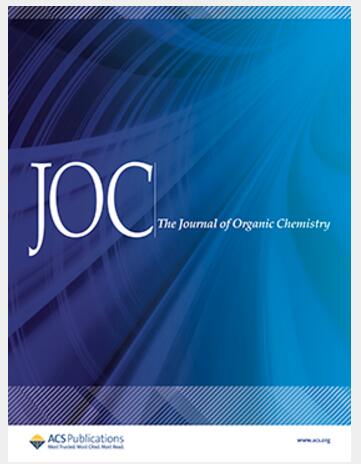Mechanistic Study on the Asymmetric Cascade Michael Addition of Alkynone and Oxindole Catalyzed by Chiral Guanidine
IF 3.6
2区 化学
Q1 CHEMISTRY, ORGANIC
引用次数: 0
Abstract
Density functional theory (DFT) calculations with the M06-2X-D3 functional were used to get the mechanistic investigation and stereoselectivity of the cascade Michael addition of alkynone and oxindole, catalyzed by a chiral guanidine-amide compound. The reaction proceeded through a two-step synergistic process involving sequential C–C and C–O bond formation, together with an H-shift. Because of the high energy barriers of 33.5 kcal mol−1 (for C–C bond construction) and 41.3 kcal mol–1 (for C–O bond construction), the reaction was difficult to proceed without the catalyst. The guanidine catalyst facilitated the generation of enolized oxindole species with high nucleophilicity, activating both the enolate oxindole and the alkynone via ion-pairing and multiple hydrogen bonding, significantly lowering the activation barriers. The combination of the guanidine unit and the sulfonamide backbone created an excellent semiclosed chiral environment, promoting asymmetric induction. Due to steric effects from the ortho- and para-substituted iPr groups in SO2Ar, the bulky Cy group, and the chiral backbone, the SS-configuration spirocyclization product with high enantio- and diastereoselectivity was formed predominantly. The E/Z selectivity in the formation of the key α,β-unsaturated ketone intermediate was influenced by catalyst-substrate interactions. Extension of the alkyl chain at the 3-position in the oxindole substrate led to the C–O bond formation more difficult, hindering the construction of spirooxindoles.

手性胍催化炔烃-氧吲哚不对称级联Michael加成反应机理研究
采用密度泛函理论(DFT)计算m06 - x2 - d3泛函,对手性胍酰胺类化合物催化的烷酮与氧吲哚级联Michael加成反应的机理和立体选择性进行了研究。该反应通过两步协同过程进行,包括连续的C-C和C-O键形成,以及h -移位。由于该反应具有33.5 kcal mol−1 (C-C键构建)和41.3 kcal mol−1 (C-O键构建)的高能垒,因此在没有催化剂的情况下很难进行反应。胍类催化剂促进了高亲核性烯醇化氧吲哚的生成,通过离子配对和多重氢键激活烯醇化氧吲哚和炔烃,显著降低了激活势垒。胍基与磺胺主链的结合创造了良好的半封闭手性环境,促进了不对称诱导。由于SO2Ar中邻位和对位取代的iPr基团、庞大的Cy基团和手性骨架的立体作用,主要形成具有高对映选择性和非对映选择性的ss构型螺旋环化产物。关键α,β-不饱和酮中间体的E/Z选择性受催化剂-底物相互作用的影响。辛吲哚底物中3位烷基链的延伸使得C-O键的形成更加困难,阻碍了辛吲哚的构建。
本文章由计算机程序翻译,如有差异,请以英文原文为准。
求助全文
约1分钟内获得全文
求助全文
来源期刊

Journal of Organic Chemistry
化学-有机化学
CiteScore
6.20
自引率
11.10%
发文量
1467
审稿时长
2 months
期刊介绍:
Journal of Organic Chemistry welcomes original contributions of fundamental research in all branches of the theory and practice of organic chemistry. In selecting manuscripts for publication, the editors place emphasis on the quality and novelty of the work, as well as the breadth of interest to the organic chemistry community.
 求助内容:
求助内容: 应助结果提醒方式:
应助结果提醒方式:


